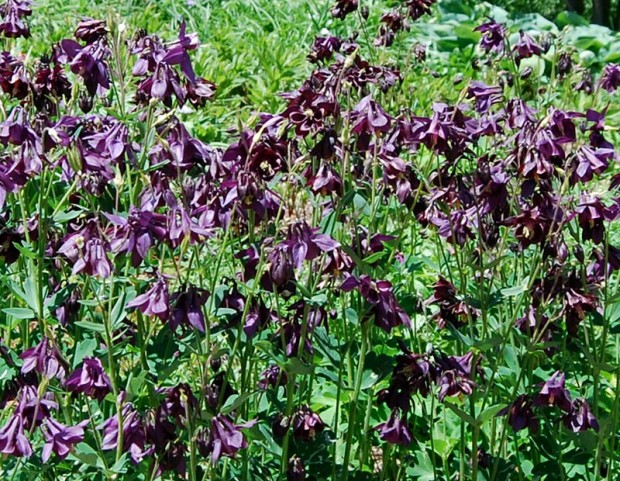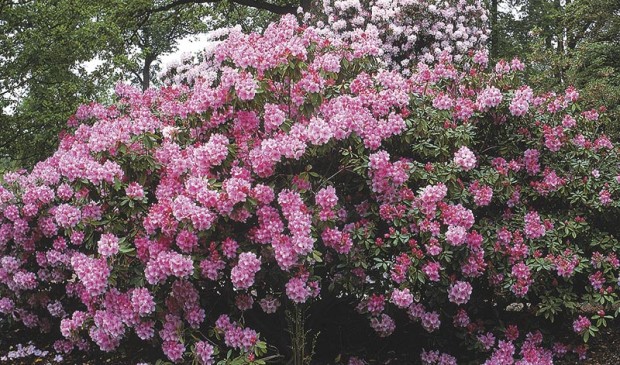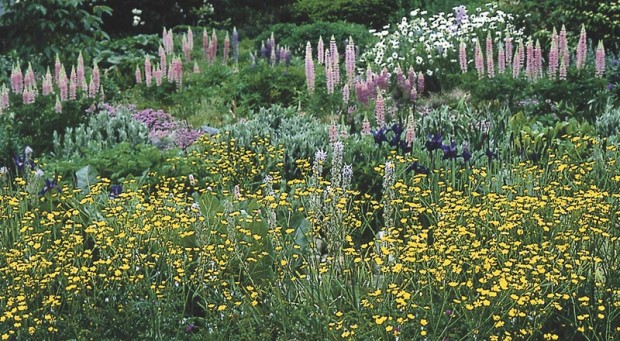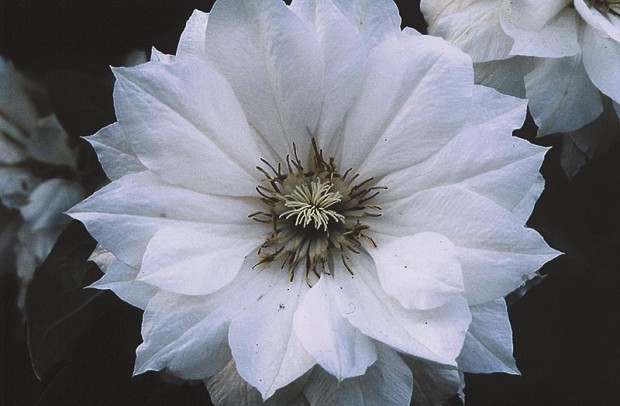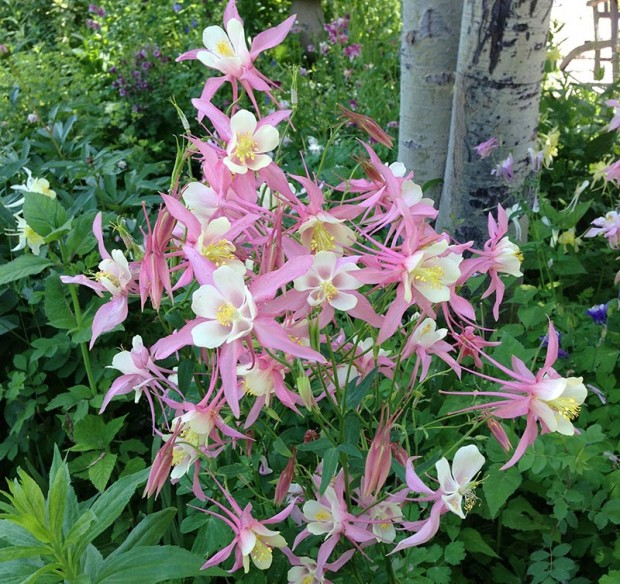
By George Papadelis
A garden without columbine is simply incomplete. Columbine (Aquilegia) comes in a wide range of colors. It produces masses of brilliant 1-to 2-inch flowers that are exquisite when appreciated up close as well as from a distance. They grow in light to moderate shade and flower from late spring to early summer for about 3 to 4 weeks. During this period, few plants can produce a show of color that rivals this one. As an effective source of color, no shade garden should be without this plant.
Most columbine varieties are readily available since this plant grows from seed that is easy to find. Young plants that have not been subjected to a sufficient cold period usually do not flower during the first season. By the second season, columbine will reach its peak and flower profusely. By the third year, plants usually decline in performance and will rarely overwinter for the fourth season. This is one of columbine’s shortcomings and should be realized before a gardener’s expectations are not met. However, many columbines drop seeds after flowering that may germinate and produce offspring in a similar color range.
A popular variety is a mixture called ‘McKana’s Giants.’ These have huge flowers on 36-inch plants in a wonderful mixture that includes reds, yellows, blues, pinks, and whites. Another popular type is the Songbird series. These individual varieties have names like ‘Blue Jay,’ ‘Dove’ and ‘Robin’ that sport colors like blue, white, and pink respectively. Another new one is the Barlow series. These have interesting double flowers and come in colors like ‘Black Barlow,’ ‘Blue Barlow,’ and ‘Rose Barlow.’
Dwarf varieties, called fan columbine, also exist. These only grow about 6 inches tall and come in blue or white.
The native varieties like Aquilegia canadensis and Aquilegia crysantha have bicolored red and yellow blossoms and all yellow blossoms, respectively. These flowers are a little smaller but these two are best for reseeding to naturalize a shady area.
For the enthusiast, collector or obsessed gardener, several unusual varieties can be found. Look for ‘Ruby Port’ which has interesting fully double maroon-red flowers—spectacular when viewed up close! Also look for the sweetly scented, chocolate-brown flowers of Aquilegia viridiflora—very rare! Some varieties like ‘Lime Frost’ even have variegated foliage. Hybridizers have produced hundreds of variations in interesting colors and forms to keep any gardener in awe.
Columbine has come a long way since its humble beginnings and deserves a place in the shade garden or even the rock garden. Try some short ones or try some tall ones, try some white ones or try some black ones. What ever your taste may be, columbine surely has a plant that’s right for you.
At a glance: Columbine
Botanical name
Aquilegia (ah-kwi-LEE-gee-a)
Plant type
Perennial
Plant size
6-36 inches tall
Flower colors
Wide variety – yellow, red, blue, purple, pink, white, pastels
Flower size
1-2 inches wide
Bloom period
Late spring to early summer
Leaves
Blue-gray-green color; attractive foliage from mid-spring to mid-summer
Light
Light shade to shade
Soil
Well-drained, moist
Hardiness
Zone 3
Uses
Shade garden, rock garden, naturalized areas
Remarks
Plant is short-lived: 1st year: young plants may not flower; 2nd year: peak blooms; 3rd year: weaker blooms; 4th year: not likely to overwinter. However, many plants will drop seeds that germinate for the following season. Ideally, grow columbine where other plants will camouflage the plant’s fading foliage in midsummer.
George Papadelis is the owner of Telly’s Greenhouse in Troy, Shelby Township, and Pontiac, MI.

